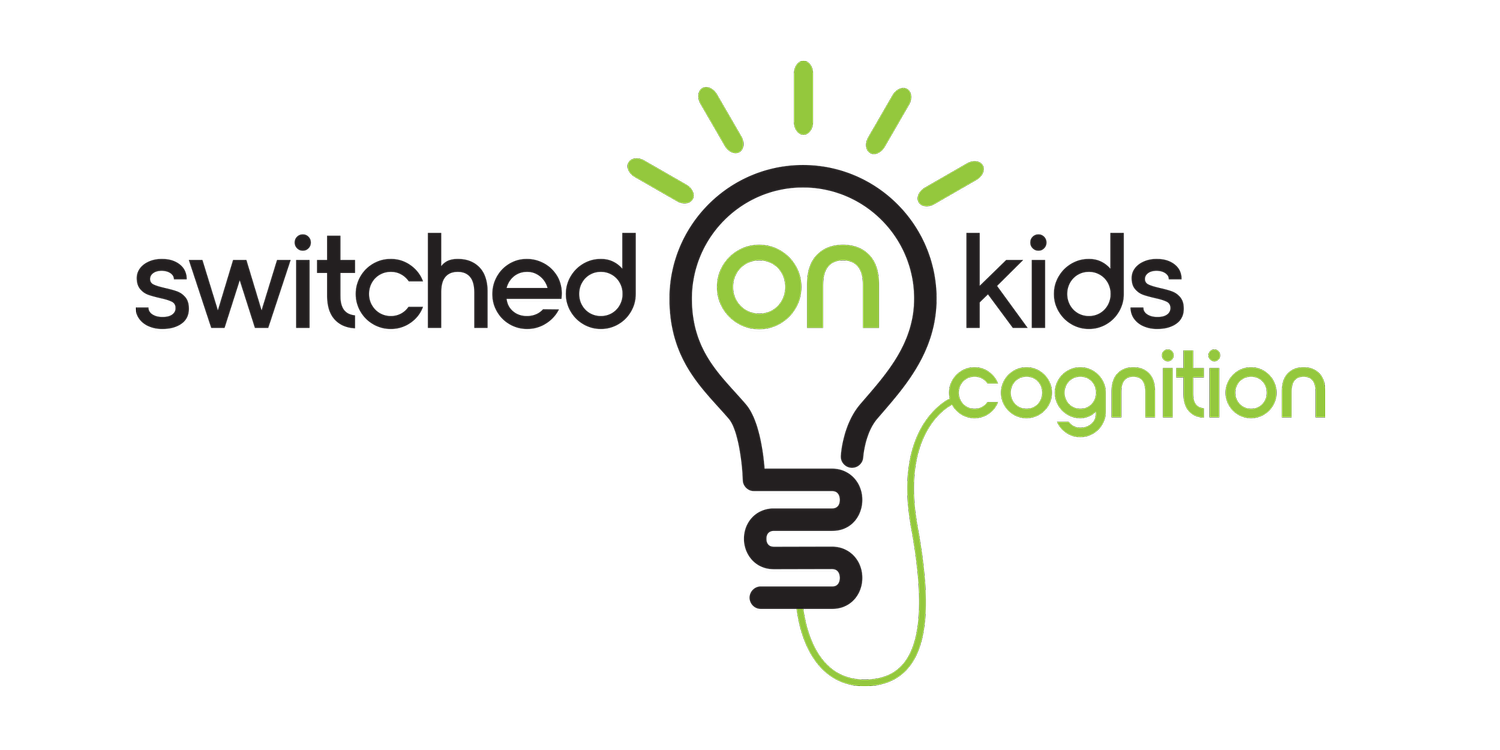Cognitive Flexibility
Time to work on … cognitive flexibility!
Have you heard of cognitive flexibility? It is a vital executive function skill! Cognitive flexibility refers to the ability to switch between thinking about two different ideas or concepts or to think about multiple concepts simultaneously. Kids (and adults) who are cognitively flexible can problem-solve, think creatively, switch/transition between tasks effortlessly, and solve problems proactively. They are better equipped to deal with a fast and constantly changing world and have the skills to cope with unexpected changes to their routine.
Kids with ADHD, autism, anxiety, or other learning difficulties often struggle with cognitive flexibility. Cognitively inflexible kids tend to get “stuck”. They struggle with change in routine, are rigid, rule-bound and find it hard to “go with the flow”. This tends to cause difficulties in social settings and play where children update and change rules constantly during games.
Cognitive flexibility relies on working memory and other cognitive skills (including sustained attention). As we move or transition between tasks, we must keep information updated and fresh in our minds so that we do not forget what we are doing. Flexibility develops during the preschool years alongside the development of language. It continues to develop during the teenage years and into early adulthood along with continued growth of the prefrontal cortex. Cognitive flexibility depends on a network of interconnected frontal and striatal brain regions. These areas are rich in dopamine and associated with reward and problem-solving.
Cognitive flexibility is a skill that takes time. Young children can be very inflexible. They tend to grab something, want it NOW, and not give it back. As we develop, we learn that we often need to wait and that we may not get what we want (boo!). We also develop the ability to consider multiple alternatives. As children learn and explore, they become better at adjusting to changes in routine and develop the ability to see things from the perspective of others.
High-level executive functions and cognitive flexibility underlie many important life outcomes including school achievement (for review see Titz & Karbach, 2014).
Cognitive flexibility is often assessed using task-switching paradigms (e.g., the Wisconsin Card Sorting Test). A simple way to practice task-switching at home is to play simple card games such as UNO where children must update the rules depending on either colour or number. Interestingly, kids around the age of 3 tend to perseverate and stick with the same rule, whereas kids from approximately age 4 can switch between rules.
Kids who are rigid thinkers tend to love rules. This can make them difficult to get along with, particularly if they over-emphasise strict rules during play. The opposite of cognitive flexibility is cognitive rigidity. Rigid thinking underlies conditions such as depression, autism and obsessive-compulsive disorder (OCD). Some children have a strong sense of social justice and become very upset if something is not “fair”. Again, this can make social situations difficult.
Neurodivergent children often struggle disproportionality with simple changes to their routines. These difficulties need to be approached sensitively, one step at a time. Cognitive inflexibility is often associated with anxiety. Change may provoke anxiety so always proceed with sensitivity.
Cognitive flexibility allows us to innovate and keep up with rapid change. Children in a busy classroom need to be cognitively flexible. We must be cognitively flexible to work with others and take their point of view. Being able to think creatively and be open to new ideas is vital for maintaining friendships and developing social skills.
The more that children step out of their comfort zone and try new and varied experiences the more cognitively flexible they will become. Executive function skills are real-world skills and must be practiced in real-world settings. The more meaningful and varied experiences we can offer our children the better. Travel, meeting new people, trying different foods, doing different things.
Children can be taught to switch tasks to train cognitive flexibility. There are several tasks within the Switched-On Kids Cognition program that require kids to switch and update information (see Module 8). There is plenty of reason to get kids practicing these types of activities. Research has shown that training task-switching does generalise to other tasks and domains and is associated with an improvement in working memory, inhibition, and fluid intelligence (Karbach & Kray, 2009). A 2012 study assessed the effects of task -switching training in 20 boys (aged 7-12) with ADHD. The training led to improvements in an untrained switching task, inhibitory control and verbal working memory (Kray et al., 2012).
In addition, there are many ways that parents and teachers can encourage cognitive flexibility. For example:
When you encounter a problem, work with your child to think of as many solutions and options as possible to solve that problem.
Show your child that many problems can be solved in more than one way.
Ask your child to think things through from the perspective of others. For example, if a holiday has been cancelled, ask your child to think of solutions that might work best for them, their parents, or a grandparent.
Model flexible thinking during everyday life (e.g., “We have run out of honey, perhaps I can use sugar”).
Point out times when you get “stuck” and need to think differently or ask for help.
Use small changes to show that change is okay. Move seats at the dinner table or in the car. Drive home via a different route and see if anyone notices.
Respect certain routines that may be non-negotiable.
Encourage kids to visualise what might happen next.
Let kids know ahead of time if their routine will change or if they will be required to transition between tasks.
Encourage spontaneity.
Practice new activities and try new things with your child – travel, new foods, new sports, different movies, new games.
Play an old game but change the rules. For example, play “memory opposites” where you must match pictures that do NOT look alike.
Occasionally change plans. Teach kids to expect the unexpected. Embrace a few different things that come your way. Model “going with the flow” when something throws your schedule out of whack (usually a late kid!).
Bend the rules a bit. Remind kids that rules are not always set in stone. What house rules do you have that are flexible? Do they go to bed on Christmas Eve at the same time as every other night?
Make subtle changes to routines. For example, can you eat dessert before dinner one day?
Remember - we are cognitively flexible when we can:
1. Cope with unexpected changes or demand.
2. Think about multiple things at the same time.
3. Use multiple strategies to solve problems.
4. Consider and reflect on the perspective of others.
5. Adapt to our environment and cope with change.
The home is a great place to practice activities designed to boost cognitive flexibility! Good luck!
To learn more about my 1:1 services please see HERE.
References
Karbach, J., & Kray, J. (2009). How useful is executive control training? Age differences in near and far transfer of task-switching training. Developmental Science, 12(6): 978-90.
Kray, J., Karbach, J., Haenig, S., & Freitag, C. (2012). Can task-switching training enhance executive control functioning in children with attention deficit/-hyperactivity disorder? Frontiers of Human Neuroscience, 5(180), 1-9.
Titz, C., & Karbach, J. (2014). Working memory and executive functions: effects of training on academic achievement. Psychological Research, 78(6): 852-68.
Zelazo, P. (2006). Implications of 3-Yr.-Olds' Successful Performance on a No Conflict Version of the Dimensional Change Card Sort. Psychological Reports 98(3):858-60.


